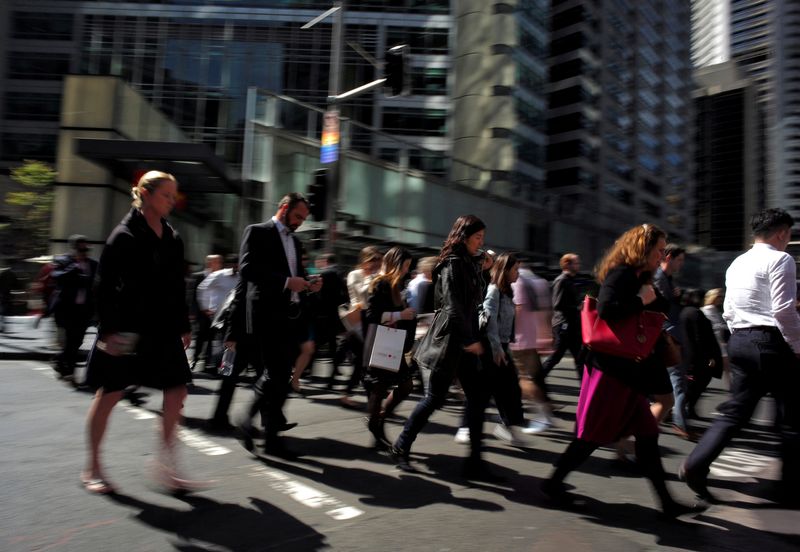By Stella Qiu
SYDNEY (Reuters) - The risk of Australia's economy slipping into recession has risen sharply, after the central bank surprised markets this week by raising rates and warned it could tighten again to tamp down on high inflation even at the cost of preserving jobs.
For a year, Reserve Bank of Australia Governor Philip Lowe has been talking of successfully navigating a narrow path to lower inflation while keeping unemployment near 50-year lows.
But this week the governor's tone changed.
After a surprise rate rise to 4.10% and a hawkish promise of even more to come, Lowe warned the narrow path would also be bumpy and that getting high inflation down would take priority over preserving jobs.
The shift led economists, some who thought rates had peaked at 3.6% when the RBA paused its tightening cycle in April, to factor in at least one more rate rise and a genuine risk of a recession, the nation's first in more three decades outside the sharp downturn at the start of the COVID pandemic in 2020.
"Combined with the hikes already delivered, we see this as likely stalling the economy... with a high risk of outright recession," said Paul Bloxham, HSBC's chief economist for Australia, New Zealand and Global Commodities.
He expects quarterly growth to average just a 0.1% over the next four quarters, with a 50% chance that the economy would enter a recession. Further, Bloxham expects the RBA to start cutting rates in the second quarter of 2024.
Commonwealth Bank of Australia (OTC:CMWAY) on Friday puts the odds of a recession this year at 50%, predicting growth to slow to an annual rate of 0.7% in the last quarter and jobless rate picking up to 4.7% in mid-2024.
Growth is already slowing to sub-par levels, with data this week showing the economy grew just 0.2% in the March quarter as struggling households ran down savings and cut back on spending.
With the full effect of the hefty monetary policy tightening - 400 basis points since last May, including 100 basis points since February - yet to be felt through the economy, bond markets are starting to price in recession risks.
The bond yield curve has now inverted, considered a signal of recession fears. On Friday morning, two-year yields stood at 4.018%, 6 basis points above the 10-year yields but almost 8 basis points below the cash rate.
Having been caught off guard by the rate rises in May and June, markets are now pricing in a peak rate of 4.5%, suggesting a risk of two more hikes to 4.6%.
INFLATION EXPECTATION
Lowe had signalled his comfort with a mid-2025 timeline to get inflation back into the 2-3 % target range so as to preserve job gains, but this week said that patience had a limit.
"I want to make it clear, though, that the desire to preserve the gains in the labour market does not mean that the Board will tolerate higher inflation persisting," he said on Wednesday.
Jonathan Kearns, chief economist at investment firm Challenger and a former RBA executive, says the risk of trying to hold on to job gains was that higher inflation expectations hardened and kept the actual inflation rate high.
"That's where he seems to come around a bit more now. And pushing rates higher is increasing the chance that Australia goes into a recession," said Kearns, who headed the RBA's domestic markets department until earlier this year.
Kearns expects two more hikes to 4.6%.
A survey of union officials cited by Lowe showed that medium-term inflation expectations have risen to a 3-4% range.

In particular, a large pay rise for minimum wage workers last week has stoked concerns it could set a benchmark for other wage claims, after Lowe flagged rising unit labour costs as a risk.
"They seem very resolved to get inflation down and if it has to be a bumpy landing, I think that's a price they're prepared to pay," said Ivan Colhoun, chief economist of markets for National Australia Bank (OTC:NABZY).